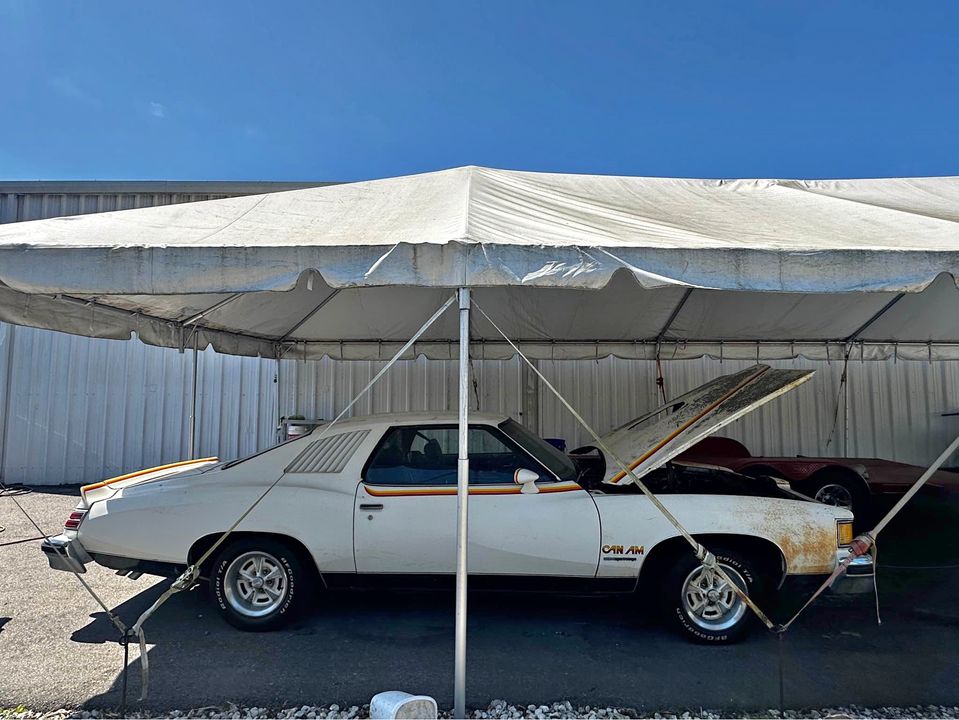Tech
Rare 1977 Pontiac Cam Am Parked Under a Tent Begs for Total Restoration

He felt there was still room for a higher-performance midsize model similar to the GTO, so he proposed a performance package for the LeMans. Having created the Ford Mustang Cobra II, Dodge Aspen R/T, and the AMC Hornet AMX through Motortown Corporation, Wangers knew exactly what this Pontiac needed: improved aerodynamics, a flashy appearance package, and extra oomph.
Dubbed Can Am after the iconic SCCA racing series, the beefed-up LeMans hit showrooms with a white livery and orange, yellow, and golden tri-tone stripes. The Can Am also got the Trans Am’s shaker hood scoop and a ducktail rear spoiler sourced from the Grand Am All-American show car.
Thanks to Pontiac’s W72-series V8 engine, the Can Am was more than just an appearance package. The 400-cubic-inch (6.6-liter) mill sourced from the Trans Am delivered 200 horsepower, 20 horses more than 400 V in the LeMans Sport Coupe. And while it was far from impressive when compared to the GTO of the golden muscle car era, the Can Am was among the most potent production cars of 1977.
Some Can Ams were also equipped with an Oldsmobile 403-cubic-inch V8 rated at 185 horsepower, which found its way into vehicles delivered in California.
Pontiac was reportedly planning to produce 5,000 Can Ams, but the nameplate was discontinued after only a few months in production and just 1,377 examples made. Production came to a halt when the mold that Motortown used to fabricate the fiberglass rear spoiler broke. Unhappy that the Can Am was eating into Grand Prix sales, Pontiac executives decided to axe the project.
But despite its short production run and scarcity, the Can Am isn’t exactly desirable today. And it’s far more affordable than most Pontiacs from the golden muscle car era. Sadly, some of the 1,377 units built are still waiting for a second chance at life, like this example that emerged in Clearwater, Florida.
Parked under a tent that doesn’t provide full protection from the elements, the Can Am is in pretty rough shape compared to other examples I’ve seen in recent years. There’s surface rust on many body panels, the chrome work has seen better days, and the interior needs a thorough cleaning.
The Poncho still packs its original V8 engine, but the mill doesn’t run. The Can Am packs the 400-cubic-inch V8, which makes it one of 1,335 units equipped like this (42 examples got the Olds 403 powerplant). If you want to save this rare muscle car from the Malaise Era, the seller asks $13,500.







:max_bytes(150000):strip_icc()/roundup-writereditor-loved-deals-tout-f5de51f85de145b2b1eb99cdb7b6cb84.jpg)


